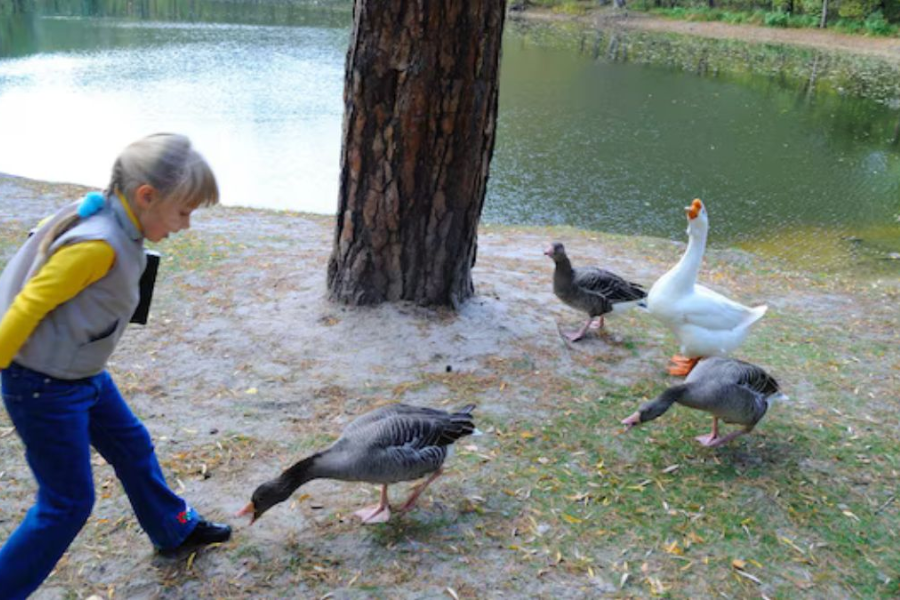Exploring the World of Peiscans: An Introduction to These Unusual Animals
We invite you to explore the fascinating world of peiscans, a unique species that mesmerizes with its beauty and behavior. These creatures are remarkable inhabitants of the natural world due to their unique lifestyle in addition to their outstanding looks. This book will take you on an interesting tour through everything you need to know about peiscans, whether you’re a nature lover or just interested in learning more about these unusual species. You’ll learn more about these remarkable creatures, from their physical characteristics and habitats to their social relationships and conservation problems. Now let’s explore the fascinating realm of peiscans!
Physical Traits of Peiscans
Peiscans has a slim, streamlined physique that allows them to glide effortlessly between water and land. Their colorful plumage, which ranges in hue from brilliant yellows to deep blues and is frequently arranged in elaborate patterns to accentuate their attractiveness, is what sets them apart from other birds. Peiscans are elegant fliers with long, strong wings, and their keen eyesight helps them detect prey at a considerable distance. Their powerful, curved beaks are ideal for catching fish, and their webbed feet allow them to swim exceptionally well. Every component of their body has a function that enables them to move easily through the variety of places they inhabit.
Habitat and Distribution
Because of their extreme adaptability, peiscans live in a wide range of environments, especially in rivers and coastal areas where freshwater and saltwater meet. They like moderate climates, frequently building their nests on sandbars or cliffs that offer cover and convenient access to food. They can survive in a range of climates because their distribution extends from the northern hemisphere to tropical areas. During the winter, a large number of peiscan populations migrate to warmer waters, demonstrating their adaptability and resilience. Every habitat presents different chances and difficulties, which adds to the uniqueness of each experience with these amazing creatures.
Diet and Feeding Habits
The diversity of peiscan diets is a reflection of their omnivorous nature. They feed mostly aquatic plants, tiny fish, and crustaceans, adjusting to the food supplies in their surroundings. Pescans dive into the water to capture prey with their keen eyesight, but they are also opportunistic feeders who occasionally scavenge or steal food from other animals. They can stay nourished all year round because their food changes with the seasons.
Social Behavior and Interactions
Peiscans are gregarious creatures that do well in small, close-knit communities. Their interactions revolve around communication, with body language and voice calls being important components. They playfully act out actions like chasing and pretend fighting, which serves to fortify relationships within the group. Peiscans are normally calm, but when protecting their land or resources, they can become hostile and create hierarchies within the tribe. Males and females work together as cooperative parents, providing care and imparting vital survival skills to their offspring.
Reproduction and Life Cycle
Male peiscans show their bright plumage in dazzling displays to entice females in an intricate courtship ritual. Following the formation of a partnership, the female deposits three to five eggs in a safe nest that is frequently concealed in thick vegetation or cracks in rocks. The eggs are incubated by both parents alternately, and the chicks hatch after roughly three weeks. These altricial chicks are quite dependent on their parents for care, but as they become older, they start to become more independent. The juvenile peiscans fledge after six weeks, but before going it alone, they spend some time learning survival techniques from their parents.
Threats and Conservation Efforts
Pelicans, like many other wildlife species, are in constant danger of going extinct. The reduction of wetlands and streams that they rely on for food and nesting is a serious worry resulting from habitat loss caused by urban expansion and agriculture. In addition to disrupting their migratory habits and food availability, pollution, especially in aquatic bodies, can negatively impact their health and population. Even though there are laws against hunting, some places still have problems with illicit poaching. Through habitat restoration and legal actions, conservationists are trying to safeguard pelicans and educate the public about the value of protecting these amazing species.
Observing Peiscans in Nature
For those who enjoy wildlife viewing, seeing peiscans in their natural environment is a pleasant experience. Visit marshes, rivers, or coastal regions where they are found to watch them. Since they are most active in the early morning and late afternoon, these are the best times to see them. You can go up close without upsetting them if you have binoculars, but patience is essential. You can find their whereabouts by listening for their distinctive calls. To guarantee a tranquil meeting with these amazing animals, always keep a respectful distance and refrain from creating loud noises.
Interesting Facts About Peiscans
Surprises abound with Peiscans! Their amazing feathers can alter hue in response to their environment or emotional condition, giving them the ability to blend in or express different moods. Socially, they are renowned for their cooperative hunting techniques, which provide food access for all members of the group. They can hunt and avoid danger because of their extraordinary hearing, which allows them to detect even the smallest sounds from a great distance. Peiscans are playful creatures who enjoy surfing waves and soaring through the air in demonstrations of courting activity. Within their environments, some individuals can live up to 20 years in the wild, making them long-lived species.
FAQs:
1. What are peiscans?
Peiscans are unique aquatic birds known for their vibrant plumage, exceptional swimming abilities, and fascinating behaviors. They are often found in coastal regions and riverbanks, making them a key part of diverse ecosystems.
2. Where do peiscans live?
Peiscans primarily inhabit areas where freshwater meets saltwater, such as coastal regions, rivers, and wetlands. They prefer locations that offer abundant food sources like fish and crustaceans.
3. What do peiscans eat?
Peiscans are omnivorous, with a diet that includes small fish, crustaceans, and aquatic plants. They are skilled hunters, often diving underwater to catch prey, and sometimes scavenging when necessary.
4. How do peiscans reproduce?
Peiscans engage in elaborate courtship displays to attract mates. Once paired, they lay eggs in hidden nesting sites, and both parents take care of the chicks until they are independent.
5. Are peiscans endangered?
While not all species of peiscans are endangered, many face threats from habitat loss, pollution, and climate change.To safeguard them and their habitats, conservation initiatives have been put in place.
6. Can I observe peiscans in the wild?
Indeed, pelicans are visible in their native environments close to freshwater sources.Early mornings and late afternoons are ideal for spotting them, and using binoculars can help you get a closer view without disturbing them.
Conclusion:
Peiscans are fascinating animals that live in settings that are full of life and mystery. Their distinct physical characteristics, varied dietary habits, and intricate social interactions provide evidence of the adaptability and beauty of the natural world. But like many other species, they are increasingly threatened by environmental issues, which means conservation measures are essential to their existence. We can contribute to ensuring that these amazing animals survive in the wild for many more generations by increasing our knowledge about pelicans and supporting efforts to safeguard their habitats. Pescans provide an enthralling look into the wonders of the natural world, regardless of your level of interest in birds or the natural world in general.






